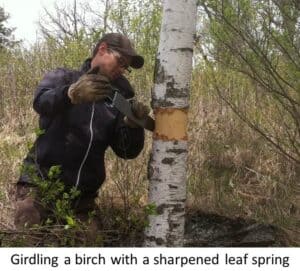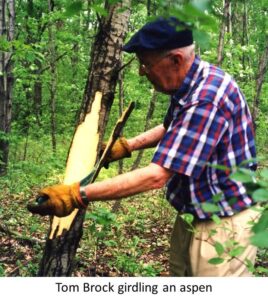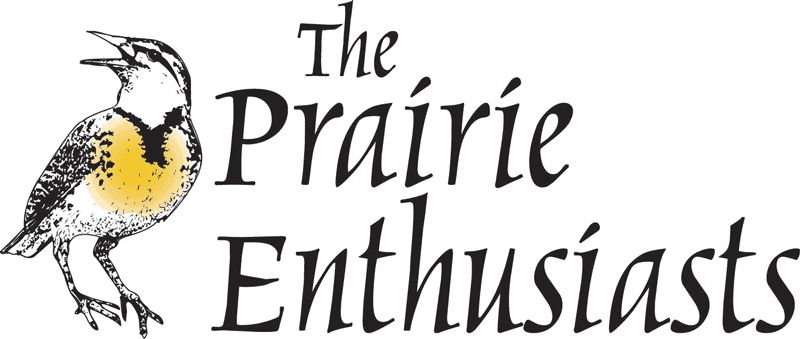
Spring is the time for girdling
Jim Rogala
The intense transfer of materials within a tree at this time of the year makes for efficient girdling. Girdling is simply the removal of the “bark” to kill a tree. I use girdling as my go-to method for killing aspens clones. The method works best on clones where stems are at least an inch or two, although it can be used in combination with double cutting of the smaller stems (a topic for another post). It is critical to girdle all stems of a clone. I use it on a number of other species, including birch, but it doesn’t work on all species (e.g., box elder).


The key to successful girdling without using herbicide is to remove the outer layers (inner and outer bark) of the truck without injuring the innermost parts. I’ll bore you with the plant anatomy and physiology details in a later paragraph, but the details are really unneeded to accomplish the mission at this time of year. There is an obvious break between these layers when the tree is translocating a lot of materials upward, which is happening now. A person can simply run a tool between these layers around the entire circumference with a span of at least 6 inches wide. There’s no need to have clean cuts on the upper and lower ends of the separation, with the end-product often being somewhat banana-peeled looking.
There are a variety of tools that can be used to girdle, but from the description of the process above it’s obvious that a chainsaw is not one of them. For smaller trees, I often use a somewhat dull wide-bladed wood chisel. For larger trees, I use a flat pry-bar or a leaf spring cut to a manageable size and sharpened on one end. First I use the tool vertically to open an area to access the location between the layers, but this should be done without cutting too deeply into the tree. Then, put the tool between the layers horizontally and work it around the tree.

For those of you that are curious, here’s why this method works. There is a lot of specificity in the cells of a tree. There are those that transport materials upward in the inner layers (the xylem), and those that transport materials downward in the outer layer (phloem). Products stored in the roots, along with water, are sent upward. Products generated by photosynthesis in the leaves are sent downward. By removing the outer layer, the plant starves to death without the translocation of nutrients to the roots. You might be thinking that just cutting the tree might serve the same purpose. Well, that’s true for some species (such as cedars), but most trees have a strategy that includes resprouting from the base (or, like aspen, from rhizomes) when the xylem is disturbed. Be patient when looking for the results, as the tree will appear fine until the need for nutrients from the roots becomes great in the following spring. Sometimes it might take two years for the tree to die.
More information on girdling can be found by searching the web, but be careful to look for methods similar to what I’ve described here that don’t use herbicide. Tom Brock has a section on this topic on the Pleasant Valley Conservancy website (http://pleasantvalleyconservancy.org/brushandtrees.html). This method is not only effective, but minimizes the use of herbicides, which is attractive to me.
